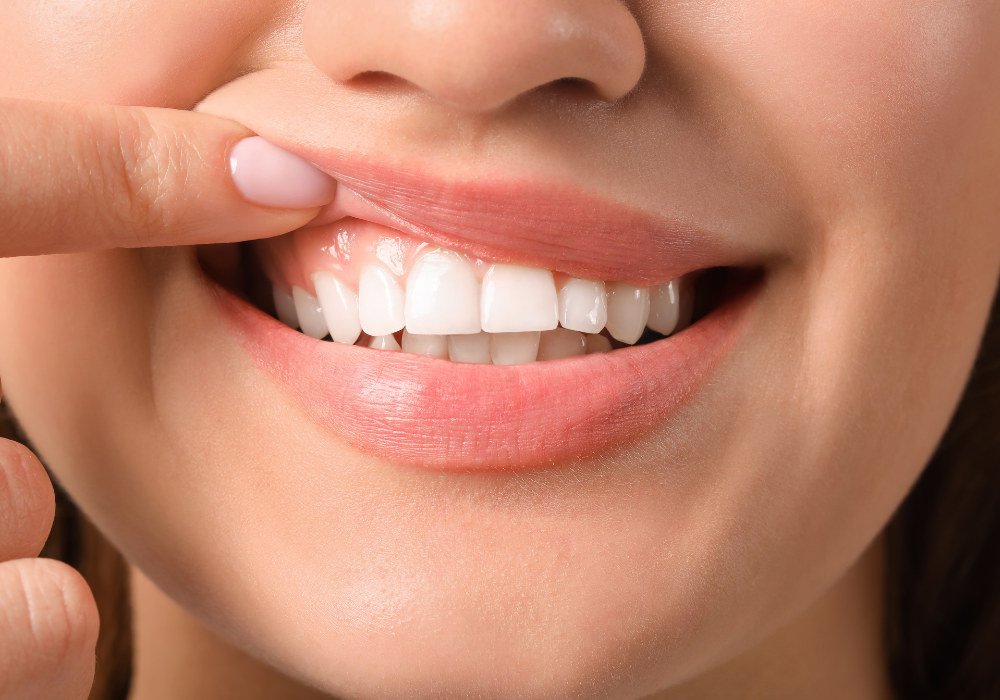Why Do Teeth Wear Down and How to Prevent It?

Most of us perceive teeth as something strong and durable — if there’s no pain, everything must be fine. In actuality, however, teeth—particularly enamel—have limitations. Tooth decay is one of the most prevalent, although subtle, issues. It isn’t obvious at first. However, as time passes, teeth become darker, shorter and more susceptible to cold and the grin loses its aesthetic appeal.
Although it frequently doesn’t hurt, dental wear—an abnormal, fast loss of enamel or even dentin—can have major repercussions, including biting problems and tooth loss. It is preventable, which is excellent news. Иut for that, it’s important to understand the causes, risk factors, and most importantly — how to avoid tooth erosion in the future.
Main Causes of Tooth Wear
- Bruxism (teeth grinding)
Unconscious teeth-grinding or clenching at night or throughout the day. Rapid enamel deterioration is caused by excessive pressure, particularly on chewing surfaces.
- Malocclusion (misaligned bite)
Too much pressure is applied to some places when teeth do not seal properly. Particularly in the front or side sections, this results in localized wear.
- Aggressive tooth brushing
Too much pressure, abrasive or “natural” toothpastes, or hard-bristle brushes can harm the gum line, where enamel is weaker and more susceptible.
- Acid erosion
The pH in the mouth is lowered by frequent consumption of acidic foods and beverages (citrus fruits, juices, carbonated drinks, wine) or acid reflux, which weakens enamel and increases its susceptibility to wear.
- Habit of chewing hard objects
Strong point pressure produced by nails, pens, hard candies, or seeds accelerates the loss of enamel.
- Tooth loss
The remaining teeth experience increased strain and deteriorate more quickly if lost teeth are not replaced with implants or prosthesis.
Symptoms That Indicate Tooth Wear
- Teeth appear shorter or smaller than before;
- heightened sensitivity to meals that are spicy, cold, or sweet;
- Having surfaces that are concave or flat;
- biting alterations and pain while shutting teeth;
- black, matte-looking, dull enamel;
- jaw clicking and temporomandibular joint pain;
- teeth that chip or break often
Tooth Wear Prevention: What You Should Do
Proper care and limiting poor behaviors can slow down or even stop tooth deterioration. At KClinics, we suggest the following practical steps:
- Use a soft brush and don’t press too hard
Enamel is harmed by hard bristles, particularly in the vicinity of the gum line. Select Soft or Extra Soft brushes and use light circular strokes.
- Avoid abrasive and aggressive toothpastes
Toothpastes that contain baking soda, activated charcoal, or “natural scrubs” are bad for enamel. Select toothpastes made for sensitive teeth or those with an abrasivity RDA of less than 70.
- Use fluoride and remineralizing products
Toothpastes containing hydroxyapatite, calcium, or fluoride improve enamel and lessen wear. As an additional precaution, you can use remineralizing gels or serums.
- Use night guards for bruxism
Your dentist can create a customized night guard to preserve tooth enamel and lessen jaw strain if you grind your teeth while you sleep.
- Correct your bite
In addition to straightening teeth, orthodontic treatment (braces, aligners) also distributes chewing pressure uniformly, preventing tooth damage.
- Replace missing teeth
Don’t leave gaps in your mouth – they overwhelm other teeth and hasten deterioration. Balance is maintained with the use of implants or bridgework.
- Attend regular check-ups
Seeing your dentist twice a year allows early detection of tooth wear and timely treatment before the problem becomes severe.
In conclusion
Tooth wear is a medical disease that can and should be prevented, not a normal aspect of aging. Simple measures like night guards, acid management, frequent exams, careful eating and behaviors, and proper cleanliness may keep your smile looking great for decades.
In addition to providing treatment, KClinics also provides education on how to maintain tooth enamel, repair damaged teeth, and promote the general well-being of the craniofacial system.



